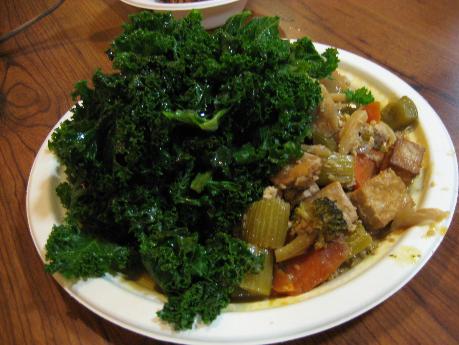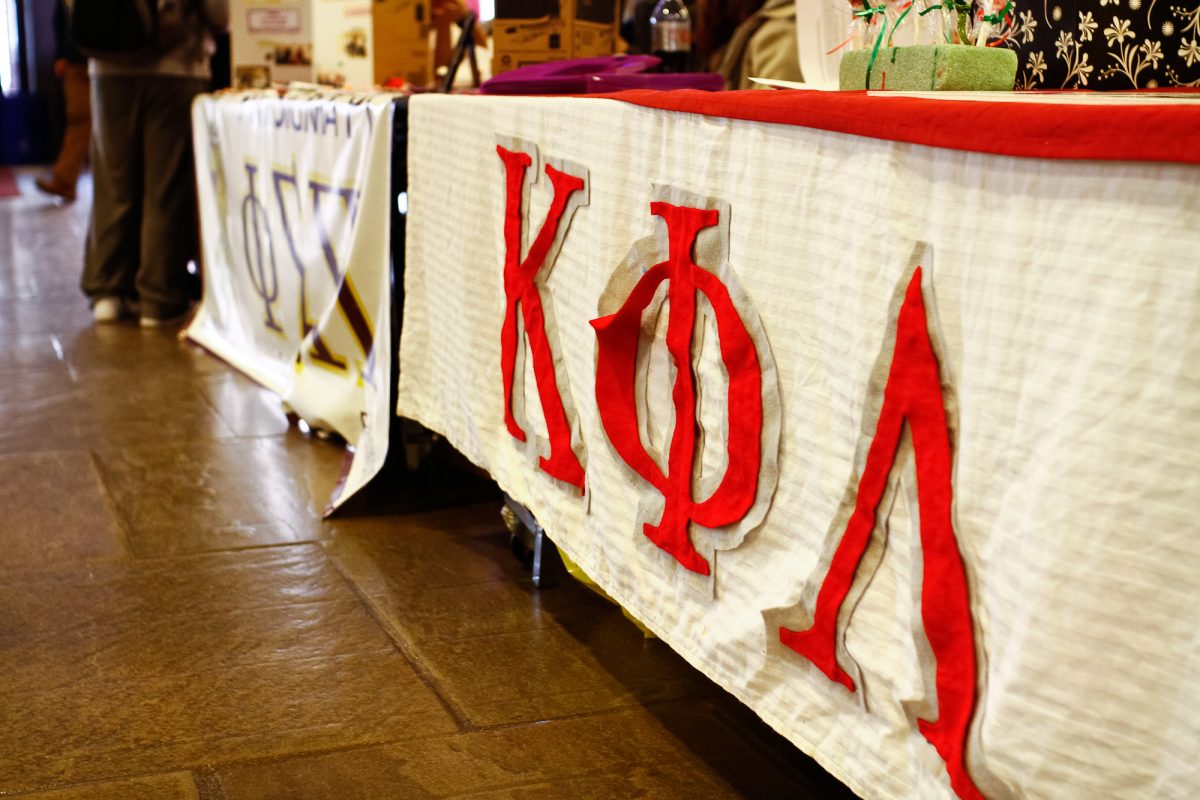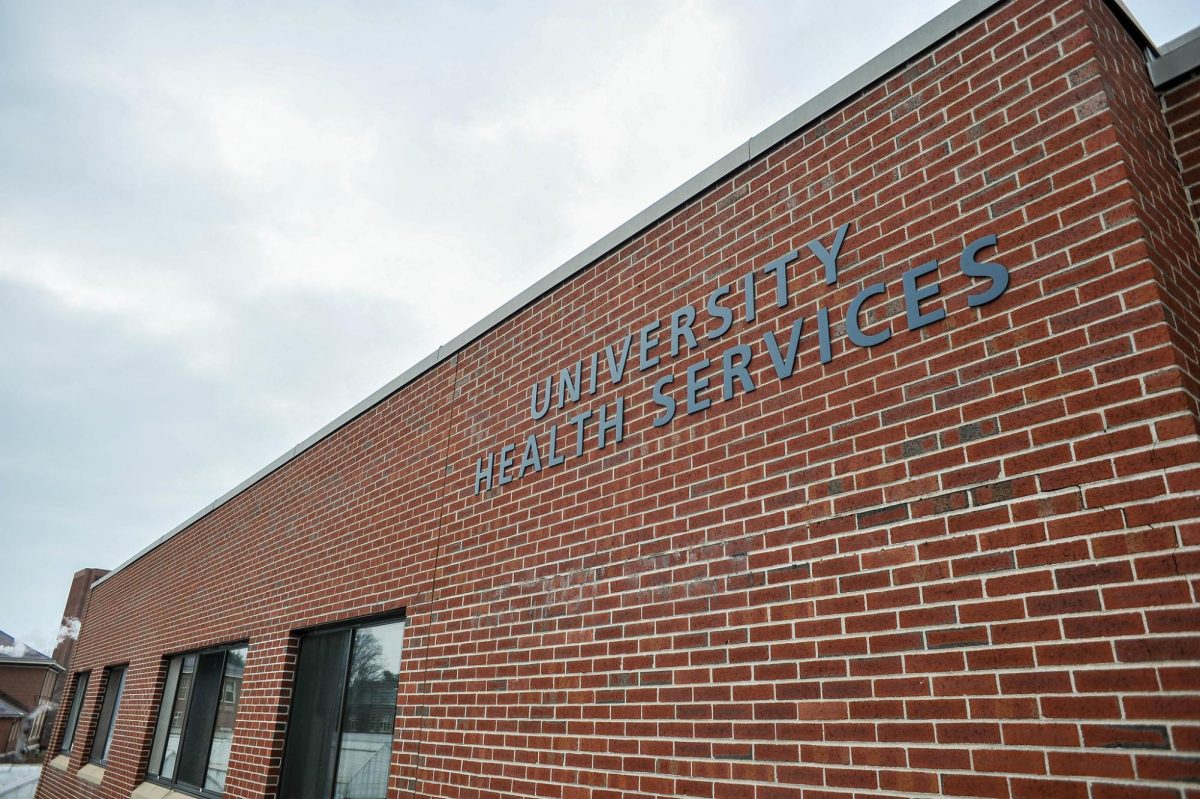 Courtesy Andrea Murray
Courtesy Andrea MurrayA man in a suit and tie stands at the counter of Earthfoods Caf’eacute;, and hands his large Tupperware container over the counter.
He asks only for a large serving of kale.
Kale? That dark green, leafy, sometimes tough relative of the cabbage family?
No, kale may not be the most respected vegetable on the planet, but at the University of Massachusetts and other places, it’s becoming increasingly popular. A large serving of kale that takes up half of a plate only costs $1.50 at Earthfoods, and the caf’eacute; serves about 200 pounds of it each week. The health benefits pile up as big as the heaping servings there.
Kale is not a familiar vegetable to most, but it’s easy to grow and support locally in New England. Kale is gaining a following among those concerned with the health of the planet and themselves.
Kale is a leafy green that descends from wild cabbage. It has been around for nearly 2,000 years. The Greeks and pre-Catholic Romans grew several varieties of kale. It comes from the vegetable family Brassica, which includes its better-known siblings cabbage, cauliflower and Brussel sprouts.
“People are really jazzed about local food,” says Emily French, a BDIC major focusing on agriculture.
French, in collaboration with Adam Dole, has helped to run the organic kale farm, Common Wealth, on UMass property in South Deerfield. She estimates that in the fall, they collected between 120 and 250 pounds of kale per week to supply Earthfoods with local produce for as long as they could. Things went so well this past fall with Earthfoods that French’s project is expanding this spring to provide onions, carrots, lettuce, beets, garlic and leeks. French admits to becoming a bit spoiled as a result.
“I don’t really eat a lot of kale in the spring because now I’ve had really good local kale,” says French.
Kale is a native vegetable to northern Europe and the British Isles, and has been an important vegetable to the British and Scots in the present and past. When World War II began, the “Dig for Victory” campaign was launched in Britain. Citizens were encouraged to plant essential crops in their gardens to provide their own food. Kale was chosen as one of the essential vegetables for this campaign because of its impressive nutritional value that complemented meager rations. After the war, kale faded into the diets of yesteryear.
Kale is considered to be one of the most highly nutritious vegetables because of its high vitamin content of A, B6, B1, B, C and E. It’s a good source of iron, manganese, fiber, copper, folic acid, calcium and antioxidants. Kale has also been shown to have high levels of phytonutrients, which are natural chemicals in produce that may fight cancer. Kale has also been said to be a tumor deterrent. It has no cholesterol and a cup of the cooked greens only has 36 calories.
“It is extremely rich in iron and vitamins, it’s beautiful to look at and I really love the taste of it,” says Adam Dunetz of the Green Bean restaurant in Northampton.
Dunetz and his partner in life as well as business, Liz Karney, own the Green Bean restaurant, a two-month old breakfast and lunch caf’eacute;. Karney is a former UMass Earthfoods team member and she and Dunetz continue to share their love of kale at their budding business. One of the few, possibly only restaurants in the area with kale on their menu, Dunetz says that it has been a big surprise sensation among customers.
“Green Eggs is probably our best selling dish in the whole restaurant. We sell more kale than probably anything else on the menu,” Dunetz confessed.
The name “Green Eggs” may not sound appetizing, but it certainly grabs attention. On the Green Bean menu, “Green Eggs and…” is a breakfast dish that consists of a choice of breakfast meat that accompanies three eggs, kale or collard greens, a spot of garlic, and a pinch of salt all blended together then scrambled in a pan and topped with Vermont cheddar cheese.
“I put it [kale] on [the menu] because how could Liz and I not?” Dunetz asked. “We eat so much kale in our own lives. It was sort of an experiment, and as it turns out, people are ravenous for kale.”
Dunetz was also quick to cite the benefits of buying local. When the kale is bought locally it helps to support local farmers and the local economy. Besides, freshly- picked kale tastes a lot better than kale that has been sitting in a box for a week.
“I can say that about nine months out of the year we’re going to be able to buy it locally,” Dunetz says.
Unless you’ve tried kale at Earthfoods, the only other place you may have seen it was garnishing your plate at restaurants. Ornamental pink, purple and white kale is nice to look at, but is not as tasty as the leafy varieties.
The wide variety of kale makes for an interesting array of uses. Popular ways to prepare kale include raw and washed, steamed, blanched or saut’eacute;ed. Certain types of kale like Tuscan kale are better suited for salads. Red Dino and curly kales are better as a side dish prepared to your liking. Kale can be used in soups, pasta tosses, salads or just alone. Cooked kale is great with balsamic vinegar and oil, tahini sauce or any preferred dressing.
So c’mon, what have you got to lose? Give kale a chance.
Andrea Murray can be reached at [email protected].






